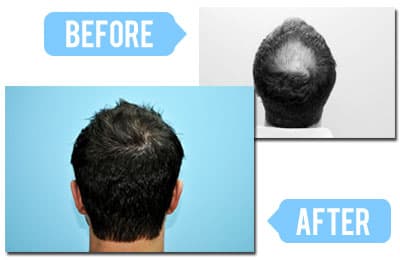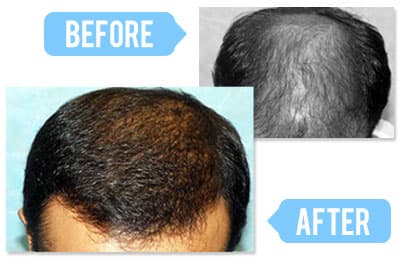Hair loss affects millions worldwide, leading many to seek advanced hair restoration solutions. DHT (Direct Hair Transplant) and DHI (Direct Hair Implantation) stand out as popular choices among the latest innovations. But how do they compare? This article will comprehensively compare DHT vs. DHI hair transplants, discussing their procedures, advantages, success rates, recovery times, and costs. If you're considering a hair transplant, understanding these differences can help you make an informed decision.
Understanding DHT and DHI Hair Transplants
What is DHT (Direct Hair Transplant)?
DHT hair transplant is a variation of the Follicular Unit Extraction (FUE) technique, where individual hair follicles are extracted from the donor area and implanted into the recipient area. The process involves:
- Extracting hair follicles using micro punches
- Preparing the scalp for implantation
- Placing the follicles using fine instruments
This method aims for minimal scarring and a natural-looking hairline.
What is DHI (Direct Hair Implantation)?
DHI hair transplant is a more advanced method derived from FUE, incorporating the Choi Implanter Pen for precise implantation. The key steps include:
- Extracting hair follicles using a specialized tool
- Loading the follicles directly into the Choi Pen
- Implanting follicles immediately without pre-made incisions
This technique offers greater control over depth, angle, and direction, resulting in a more natural appearance.
Key Differences Between DHT and DHI Hair Transplants
- Extraction Method: Both DHT and DHI use FUE-based extraction techniques.
- Implantation Technique: DHT requires manual placement with incisions, whereas DHI uses the Choi Pen for direct implantation.
- Scalp Preparation: DHT requires pre-made incisions, while DHI does not.
- Procedure Duration: DHT is quicker since implantation is manual, while DHI takes longer due to precise placement.
- Recovery Time: DHT has a slightly faster recovery period, whereas DHI takes longer due to meticulous implantation.
- Success Rate: DHT has a high success rate but depends on skill level, whereas DHI has a higher success rate due to improved precision.
- Cost: DHT is generally more affordable, while DHI is more expensive due to specialized tools.
Advantages of Each Method
Advantages of DHT Hair Transplant
- Faster procedure compared to DHI
- More affordable than DHI
- Effective for covering large bald areas
- Less specialized equipment required
Advantages of DHI Hair Transplant
- More precise implantation for a natural look
- Higher graft survival rate
- Reduced trauma to the scalp
- No need for channel incisions, minimizing bleeding
Recovery Time & Success Rates
DHT Hair Transplant Recovery Time
- Initial Healing: 7-10 days
- Scabbing & Shedding: 2-3 weeks
- Full Hair Growth: 6-12 months
DHI Hair Transplant Recovery Time
- Initial Healing: 10-14 days (longer due to precision)
- Shedding & Growth Phase: Similar to DHT (2-3 weeks, full growth in 12 months)
Success Rate Comparison
- DHT Hair Transplant Success Rate: 85-90%
- DHI Hair Transplant Success Rate: 90-95%
DHI's improved graft handling contributes to its higher success rate.
Cost Comparison: DHT vs. DHI Hair Transplants
- UK: DHT costs range from £2,500 - £5,000, while DHI ranges from £3,500 - £6,500.
- Turkey: DHT costs between £1,500 - £3,000, whereas DHI costs between £2,500 - £4,500.
- USA: DHT costs range from $4,000 - $8,000, while DHI costs between $6,000 - $12,000.
DHI is generally more expensive due to the Choi Implanter Pen and the increased precision required.
Frequently Asked Questions (FAQs)
1. Is DHT or DHI better for me?
If you prioritize cost-effectiveness and a shorter procedure time, DHT is a good option. If you want maximum precision, density, and graft survival rate, DHI is ideal.
2. Are the results permanent?
Yes, both DHT and DHI hair transplants provide permanent results if performed by a skilled surgeon and proper aftercare is followed.
3. Which method has fewer side effects?
Both methods are minimally invasive, but DHI may have fewer complications due to reduced trauma and direct implantation.
4. How soon can I return to work?
Most patients can resume work within 5-7 days after a DHT or DHI procedure.
Conclusion
Both DHT and DHI hair transplants offer effective solutions for hair loss, but their differences in technique, precision, cost, and recovery time make each method suited for different individuals. If you seek a cost-effective and faster procedure, go for DHT. If you prefer precision and a higher success rate, DHI is worth the investment.
Get Expert Advice on Your Hair Transplant Today!
Consult with a qualified hair transplant specialist to determine the best option for your needs. Visit our clinic for a free consultation and personalized treatment plan!



